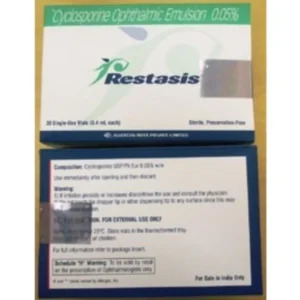Safety & Best Practices for Intravitreal Injections: What Every Patient Should Ask (Health & Beauty - Health Services)

USAOnlineClassifieds > Health & Beauty > Health Services
Item ID 3144647 in Category: Health & Beauty - Health Services
Safety & Best Practices for Intravitreal Injections: What Every Patient Should Ask | |
Intravitreal injections are common eye treatments. They help deliver medicine directly into the eye. This lets doctors treat conditions like age-related macular degeneration, diabetic eye disease, and retinal vein occlusion. If your doctor recommends an intravitreal injection, it is fair to ask clear questions. Below is a plain, patient-friendly guide you can read before your visit. It focuses on safety and what to ask. It also covers one trusted product option — Accentrix Solution for Injection — and why asking about the drug and the process matters. What is an intravitreal injection? An intravitreal injection puts medicine into the vitreous — the jelly in the back of the eye. The goal is to get the drug close to the retina and macula. This gives fast, strong effects with low systemic side effects. NHS patient leaflets explain this simply: the medicine is placed inside the eye so it can work where it is needed. Why safety matters Intravitreal injections are very effective. But they are invasive. The main risks are infection (endophthalmitis), raised eye pressure, and retinal tear or detachment. For this reason, clinics follow strict steps to lower risk. The FDA and major eye centers stress the need for aseptic technique, careful monitoring, and patient education after the procedure. Key best practices clinics should follow Ask the clinic whether they follow these simple safety steps. The injection should be done with sterile gloves, a sterile drape, and a sterile eyelid speculum or equivalent. The skin and eye surface should be cleaned with a broad-spectrum microbicide (such as povidone-iodine) before the injection. These are standard steps recommended in drug labels and clinical guidance. Your clinic should check your identity and the eye to be treated. They should review allergies and current medicines. They should confirm the dose and drug name out loud. This reduces errors. Quality-improvement studies show that clear checks cut near misses. After the injection, a short check of eye pressure or perfusion is common. Clinics will ask you to report pain, redness, flashes, or sudden vision loss. These signs need urgent attention. Many FDA labels and NHS leaflets tell patients to report such symptoms without delay. You should get simple information about the specific drug being used. This includes how it works, common side effects, and rare but serious risks. Good practice is to give a written factsheet the patient can take home. Questions every patient should ask (short list) Bring this short list to your appointment or email it ahead. What is the exact drug you will inject today? Why is this drug better for my eye than other options? Is Accentrix Solution for Injection an option for my condition? If so, why choose it? How will you prepare my eye to prevent infection? What dose will I get and how will you confirm it? Will you check my eye pressure after the injection? What symptoms should make me call immediately? Do I need someone to drive me home? When is my next injection or follow-up visit scheduled? Asking these keeps care safe and clear.  | |
| Related Link: Click here to visit item owner's website (0 hit) | |
| Target State: Montana Target City : arnold Last Update : Oct 29, 2025 9:10 AM Number of Views: 42 | Item Owner : john Contact Email: Contact Phone: 25616418 |
| Friendly reminder: Click here to read some tips. | |
USAOnlineClassifieds > Health & Beauty > Health Services
© 2025 USAOnlineClassifieds.com
USNetAds.com | GetJob.us | CANetAds.com | UKAdsList.com | AUNetAds.com | INNetAds.com | CNNetAds.com | Hot-Web-Ads.com
2025-11-01 (0.723 sec)